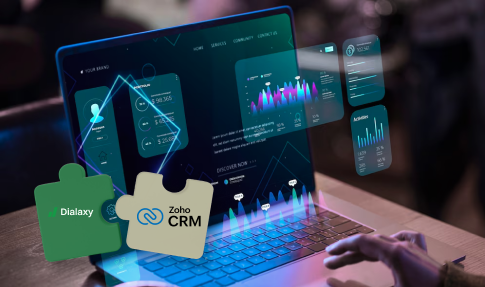Organizations, brands, and researchers are always looking for ways to gather and analyze data that helps them explore a range of topics more deeply. One highly valuable approach they use is secondary research, also known as desk research.
Secondary research involves using data and insights gathered by others. This could mean reviewing industry reports, accessing information from syndicated databases, or examining research previously conducted by experts.
In this article, we will explore what secondary market research is, why it’s important, the key steps involved in conducting effective research and how to do secondary market research.
Ready to dive in? Let’s get started!
- Secondary research involves making use of data collected by others to make a better understanding of markets, consumers, and competitors.
- Key sources will include internal data, external data, public data, commercial data, and syndicated reports.
- Secondary research is cost-effective time-saving, offers historical insights, enriches primary research, and broadens market understanding.
- Conduct research with clearly defined objectives, valid sources of information, data collection, organization, and analysis.
- Tools include Google Scholar, Statista, government databases, commercial providers, and social media monitoring, but they are not limited to them.
Definition of Secondary Market Research

Secondary research is based on information collected by other organizations or agencies. Sources include government reports, industry analyses, academic research, market research firms, and online publicly available information. Secondary research primarily attempts to use already available information in order to gain insights into markets, consumers, and competition.
Secondary research is less expensive and also less time-consuming when compared with primary research, particularly for an enterprise. This type of research assists in comprehending the market more promptly and also helps in the making of decisions on products as well as marketing strategies.
Types of Secondary Market Research
Understanding the types of secondary research can help you tailor your approach based on your needs. Here are the main types, each with specific advantages for different research purposes:
1. Internal Secondary Data
It is the source of data from inside your organization. This may include information that you already have at this present time, like past sales, customer feedback, employee surveys, analytics of websites, and CRM data.
Usage: Internal data is particularly useful to comprehend the current customers, find some periodic sales trends, or evaluate the efficiency of previous marketing strategies. Most of the time, this type of data is easily available and quite reliable since it originates from within the business.
Examples: Customer purchase history, email open rates, and logs of requests for service calls all be minded for rich insights about what customers prefer and need.
2. External Secondary Data
External data refers to the information that comes from outside the firm, and again, encompasses various sources like industry reports, academic studies, government publications, and even research organizations.
Usage: The nature of this data facilitates corporate analysis of general market trends and the level of competition, as well as insight into economic conditions or influence by regulatory bodies. External secondary data is best for an overall perspective on an industry and for spotting new trends.
Examples: Industry benchmarks, Economic statistics, competitor performance reports, and market share analyses.
3. Public Data
Public data is free and most of the time can be found courtesy of government agencies, public institutions, or non-profit organizations. It includes resources such as census data, economic overviews, and public opinion polls.
Usage: Public data are useful for broad, general insights into the market demographics, economic factors, and social trends. It’s an accessible option for small businesses or startups operating on a limited budget.
Examples: US Census data, World Bank economic data, United Nations Publications, and demographic data provided by national statistical agencies.
4. Commercial Data
Commercial data includes purchased reports and datasets from firms that specialize in market research. Companies like Nielsen, Gartner, and IBISWorld offer a treasure trove of detailed in-depth analyses that may be focused on an industry in particular, consumer behaviours, or market segments.
Usage: This is valuable for deep competitor analysis, detailed insight into customer behavior, and detailed industry trends. This does require a financial investment. Commercial data can be both very accurate and thorough.
Examples: Consumer purchasing trends from Nielsen, market forecasts from Gartner, and industry-specific studies from Mintel.
5. Syndicated Research Reports
Syndicated research reports are prepared by market research firms and are sold to many clients, usually companies operating in the same industry. Such reports are prepared on pre-determined topics, consumer preferences, competitive analysis, or sector forecasts. In this regard, the reports provide a detailed, unbiased look at industry trends in topical areas.
Usage: Syndicated research is ideal for deep, quality insights into customer behavior, industry trends, or competitor strategy, with no need to commission custom research. These reports are used by companies intending to make data-driven decisions.
Examples: Consumer behavior research from Kantar, industry trends from Forrester, and product market analyses from Euromonitor.
What are the Benefits of Secondary Market Research?

Secondary market research is one of the smart ways to source information that will help businesses make decisions. It has a series of key advantages, mainly for companies with either limited money or time. Some of the major benefits of secondary research that come along with this type of research include:
1. Cost-Effectiveness
One of the best things about secondary research is that it doesn’t cost much. While primary research can be pretty expensive because you have to create these surveys or interviews, secondary research uses information that has already been compiled.
This means you can find useful data without spending a great deal of money. For smaller businesses or schools with tight budgets, this can become a very viable way to receive information that might otherwise not be accessible.
Example: Instead of spending thousands of dollars on a new market study, a business can tap into industry reports or government data, which could be free or considerably less expensive.
2. Saves Time
The secondary research is much quicker since the information is already there. If you are doing primary research, you have to devote the time to construct a study, find people to ask, and then analyze the results.
In secondary research, one obtains data much faster. This is good for making decisions that are to be made as fast as possible.
Example: If you want to know what customers are currently buying, you can quickly check some industry reports, which can give you answers in only a few hours instead of in weeks.
3. Provides Historical Data
It is also through secondary research that one can get access to much past data, which may indeed be hard to collect through primary research. Historical data of this nature is very useful in establishing the existence of market trends analysis and temporal changes.
It helps business owners comprehend what will take place in the future. Past and current information being contrasted enables the company to make wiser decisions.
Example: A retailer may come to realize that a particular type of toy is always in demand during the holiday season and can, plan their sales and stocking accordingly.
4. Adds Depth to Primary Research
Secondary data analysis adds depth to primary research. Primary research is highly focused and the inclusion of secondary data in it may render it more comprehensive.
By combining secondary research with primary data, you can create a more comprehensive analysis that factors in industry-wide trends, competitor activities, and external influences. This layered approach helps ensure that your primary research findings are more grounded and contextualized, giving you a well-rounded view of the market.
Example: A business could survey customers about a new product and then look at industry trends to see where that product fits in.
5. Broadens Understanding of the Market Landscape
Secondary research helps businesses gain a more comprehensive view of the market landscape, including economic, social, and regulatory factors. By examining data from industry reports, market analyses, and government sources, companies can understand broader influences on the market that may impact their business.
This is particularly beneficial when entering new markets, launching new products, or making long-term strategic plans, as it provides a macro-level understanding that goes beyond customer-level insights.
Example: A company willing to sell my products in another country may use secondary research to understand the local laws, economic environment, and consumer preferences to make informed decisions before they begin.
How to Do Secondary Market Research? Step by step
Here are the steps to do secondary market research:
- Step 1: Define Your Research Objective
- Step 2: Identify Reliable Sources of Data
- Step 3: Collect Relevant Data
- Step 4: Organize and Filter Data
- Step 5: Analyze the Data
- Step 6: Apply the Insights
Tools and Resources for Effective Secondary Market Research
Using the right tools facilitates findings for secondary market research. Here are some helpful tools that make it easier to learn about market trends, what customers want, and how businesses are doing.
1. Google Scholar
Google Scholar is free and allows you to locate academic studies and research papers. You are able to search for all types of scholarly articles, theses, and reports. The studies you will come across here are reliable and give good insight, such as those about consumer behavior and industry trends.
If you need trusted information to support your decisions in business, then Google Scholar is a great avenue to begin with.
2. Statista
Statista is an online platform that offers numerous data on several industries and markets across the world. It is user-friendly because accessing any information and finding what one needs is comparatively easy.
It contains charts, reports, and statistics that provide insight into consumer trends and market sizes. Though full access requires a subscription, it helps stay updated with changing dynamics in the industry.
3. Government databases, such as the Census Bureau and the World Bank
Government databases, such as the U.S. Census Bureau and the World Bank, are free, reliable data sources relating to population, economy, and health, among many other areas.
These are of major importance to businesses in an effort to understand trends in different regions. Given the data are compiled through comprehensive studies, it’s normally very accurate. Such databases help a business understand things like income and age in different parts of the region.
4. Commercial Data Providers: Nielsen, Gartner
Commercial data providers, such as Nielsen and Gartner, publish regular and exhaustive reports on consumer behavior and market trends. The providers avail very specialized data that one may not find easily somewhere else.
For example, Nielsen will tell you what people are watching on TV and what they are buying, and Gartner just focuses on the technology trends. Although access to these reports can be expensive, they are highly detailed to help businesses understand their market better.
5. Social Listening Tools: Brandwatch, Hootsuite
Social media sometimes can be an exceptional insight into what is really going on inside people’s heads and hearts in real-time. Brandwatch, Hootsuite, and other tools have helped businesses tap into the conversations on Twitter and Facebook.
This way, a company can track customer opinions and trends around its brand or industry by looking at what people are saying about its brand or overall industry. With this, a business will be able to stay in tune and take action with what people want.
Final Words
Secondary market research is a really useful way to get information without spending a lot of money or time. By using data that’s already available, you can learn about market trends, see what your competitors are doing, and understand your customers better.
With the help of these tips and tools you can make smart decisions based on this information, helping your business succeed!
FAQs
What’s the Difference Between Primary and Secondary Market Research?
The differences between primary and secondary market research are mentioned below:
| Aspect | Primary Market Research | Secondary Market Research |
|---|---|---|
| Definition | Collecting new data directly from sources like surveys and interviews. | Using existing data that has already been collected by the others. |
| Cost | More expensive due to the need for custom data collection. | Cheaper, as it uses data that is already available. |
| Time Required | Takes longer to plan, conduct, and analyze. | Much quicker, as data is readily accessible. |
| Data Specificity | Provides specific and tailored data for your needs. | Offers broader insights that may not be as specific. |
| Control Over Data | You have full control over how data is collected. | No control over how the data was gathered or its quality. |
| Examples | Surveys, interviews, focus groups. | Government reports, industry studies, and online articles. |
How Much Does Secondary Market Research Cost?
The cost for secondary market research can be all over the map depending on the source and extent of detail. Most sources of secondary data are free, from databases of government information to published reports regarding an industry.
However, more detailed and industry-specific reports by private research firms, for example, can be expensive, upwards of several hundred dollars up to thousands. Overall, it is much less costly than primary research.
Can Secondary Market Research Be Used for New Markets?
Yes, secondary market research can definitely help in finding a new market. In fact, by conducting secondary market research, a company will get an idea about the size of the market, its growth potential, the demographics of consumers, and the competitors in that region or industry.
While secondary data won’t be available for every singular detail of a new market, it provides the valuable foundation required to make initial decisions and is one that can be supplemented later through primary research.
How Do I Find Reliable Secondary Data Sources?
Reliable sources of secondary data include government agencies, including the Census Bureau, academic journals, reliable industry reports from firms like McKinsey or Statista, trade publications, and industry associations.
For that, one has to consider the credibility of the data provider, its age, and some biases involved to get data timely and relevant to the purpose.
How Do I Analyze Data for Insights?
Start by defining your research objectives and focusing on data that directly aligns with your goals. Use tools like Excel, data visualization software, or specialized analysis programs to organize and interpret the data.
Look for patterns, trends, and outliers that can provide actionable insights. Combining data sources, when appropriate, can help paint a fuller picture and provide a more comprehensive analysis.
What do you think is the most effective form of market research?
Both primary and secondary research have advantages, and the former or the latter will be more effective depending on your objectives. In general, secondary research is good to get an overview, understand trends, and carry out quick and inexpensive studies.
It is ideal for deep insights coming directly from the targeted audience. Many businesses find that using a combination of both approaches yields the best results.
What is the most effective method of marketing?
The most effective marketing method, again, depends on your audience, your goals, and the industry. Digital marketing methods including content marketing, social media, and search engine optimization have been successful across many industries.
Email marketing will serve as one of the great personalized engagement tools for your business. Every method should be picked based on your business strategy and target demographic for maximum efficiency.
What is effective market research?
Effective market research gives insight into actionable ideas that will help drive business decisions. It is focused and relevant, with data taken from reliable sources.
Through the well-set setting of objectives and choosing relevant market research methods, organizations acquire several understandings of customers’ behavioral patterns, market trends, and competitive environments that might be needed in strategic planning.
What are the main methods of market research?
The main methods of market research include:
- Surveys (for direct feedback from target groups)
- Focus Groups (to discuss products/services in detail)
- Interviews (for in-depth, qualitative secondary research)
- Observational Research (to study behaviors in natural settings)
- Secondary Research (to analyze existing data sources)
Prasanta, founder and CEO of Dialaxy, is redefining SaaS with creativity and dedication. Focused on simplifying sales and support, he drives innovation to deliver exceptional value and shape a new era of business excellence.








